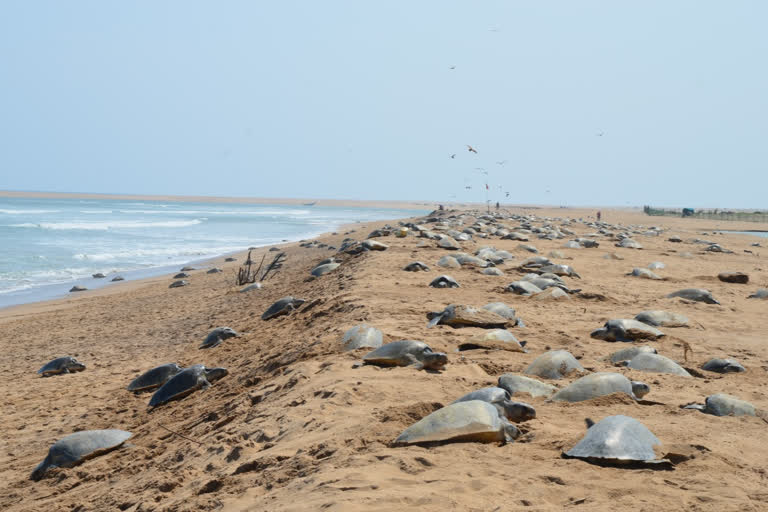Berhampur(Odisha): Thousands of Olive Ridley turtles started arriving in the wee hours of Sunday morning at the island from Gokharkuda to Podampeta in Rushikulya for mass nesting after two days of mass nesting at Gahirmatha Odisha. In spite of over erosion in coastal areas due to high tide, this year marked a record mass nesting of endangered Olive Ridley turtles at Rushikulya beach in Odisha’s Ganjam district.
"The mass nesting of the endangered turtles started on Sunday from 4 am to 8 am. As many as 40,000 Olive Ridley turtles have thronged to the rookery for nesting,” Berhampur DFO, Amlan Nayak said. He added that all necessary measures have been taken for the protection of the turtles as the mass nesting may continue for more than 10 days.
Secretary Samudrika Kaincha Surakhya Samiti Rabindranath Sahu feared that turtles might skip mass nesting because of massive sea erosion near the confluence of Rushikulya River and the Bay of Bengal. The annual nesting was also delayed by a fortnight as the turtles arrive from the third week of February to the first week of March for nesting under prevailing heat waves.
Also Read: Record number of Olive Ridley sea turtles come ashore for mass nesting
Many people, including forest officials, wildlife activists, and villagers, have been engaged in the round-the-clock protection of the turtles and their eggs. This will continue for the next 50 days until the eggs hatch. The erosion and course shifting began in 2017, as a result of which the Rushikulya river has now pierced through the beach, dividing it into two halves.
Having a life span of up to 100 years, the turtles are essentially migratory but during the breeding season, the females come to the shore, burrow 12-20 inches deep holes in the dry sand and lay around 100-150 eggs there. However, the survival rate is very low, barely 1 per cent (or, only one out of 100 survive) as the eggs or hatchlings are devoured by various terrestrial and aerial predators, necessitating their conservation. Sea turtles are essential to enable a balanced ocean ecosystem as they keep the sea waters clean by consuming dead fish and seagrass.



